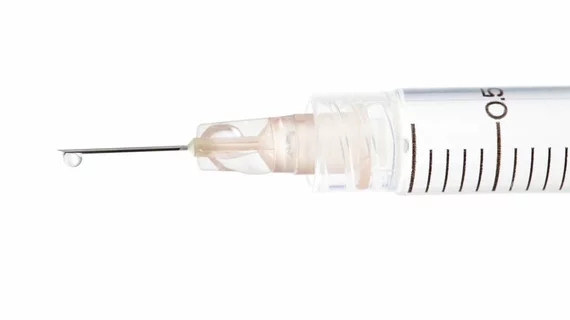Evolocumab plus high-intensity statin therapy effectively lowers LDL-C
A study published in the Journal of the American College of Cardiology suggests that, when combined with high-intensity statin therapy, evolocumab can be an effective tool for lowering LDL-cholesterol in patients who have experienced an acute coronary syndrome (ACS).
Early, in-hospital initiation of high-intensity statins is already guideline-recommended for ACS patients, first author Konstantinos C. Koskinas, MD, MSc, and colleagues said in JACC. The recommendation makes sense—statins reduce the risk of early adverse events and keep ACS patients’ cholesterol levels in check—but Koskinas et al. said many people struggle to control their LDL-C even with high-intensity statins.
The authors said evolocumab, a rapidly acting PCSK9 inhibitor that’s used in conjunction with maximum statin therapy to lower heart patients’ “bad” cholesterol, presents a unique opportunity for patients in the acute phase of ACS.
“Although additional favorable biological effects of statins on inflammation, endothelial function and coagulation have been postulated to contribute to the early clinical benefit observed in the acute period after ACS, that benefit is believed to be mediated, at least in part, by the reduction of LDL-related risk,” Koskinas, of Bern University Hospital in Bern, Switzerland, and co-authors wrote. “In view of the delayed onset of action of statins and the high risk of event recurrence during the first weeks after ACS...rapid and more potent lowering of LDL-C to levels even below currently recommended targets might be of potential therapeutic benefit.”
The researchers’ EVOPACS trial included 308 patients hospitalized for ACS with elevated LDL-C levels. They were randomly assigned 1:1 to receive either 420 mg of subcutaneous evolocumab or a matching placebo, administered in-hospital after four weeks on top of 40 mg of atorvastatin. The study’s primary endpoint was the percentage change in LDL-C from baseline through eight weeks.
Koskinas et al. found that the majority of patients in their study—78.2%—hadn’t previously taken statins. Over the course of eight weeks mean LDL-C levels decreased from 3.61 to 0.79 mmol/l in the evolocumab group and from 3.42 to 2.06 mmol/l in the placebo group. Average percentage change from baseline was -40.7%.
The authors reported that 95.7% of patients in the evolocumab group achieved LDL-C levels under 1.8 mmol/l by week eight, whereas just 37.6% of the placebo group did the same. Adverse events and CV events were similar between groups.
Koskinas and colleagues said their work will need to be validated in further studies of ACS patients.
“Importantly, because the early clinical benefit of in-hospital initiation of statins in ACS patients is likely mediated by both lipid-lowering and other pleiotropic effects, the positive prognostic impact of statins in the acute post-ACS period cannot be directly extrapolated to PCSK9 antibodies,” the researchers wrote. “Therefore, whether early initiation of a PCSK9 inhibitor on top of a statin during the acute ACS phase might translate into an incremental clinical benefit remains to be determined in properly designed studies.”

